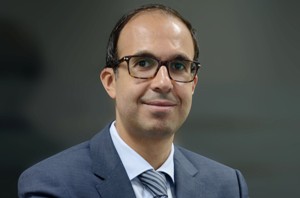5G, the next generation standard of mobile communications has entered into its initial requirements definition and research phase with commercial deployments expected to start around 2020. 5G will not just be an improvement to current mobile technologies, 4G/LTE.
5G is supposed to become the de facto standard for broadcasting and for connecting billions of devices and sensors opening the possibility for Communication Service Providers (CSP) to transform into Digital Services Providers (DSP).
It also promises to revolutionise our lives by transforming major industries from transport to energy and healthcare and by enabling futuristic services such as tactile Internet, driverless cars, remote surgery or use of holograms. That is why the development of 5G starts with the definition of its key use cases, and will be mainly driven by system performance and user experience requirements in the first place, says Mounir Ladki, president and CTO, MYCOM OSI.
As we start the journey of defining and shaping this major technology development that will underpin future networks for the next 20 years, I would like to provide a quick overview of the key requirements as they are expressed today and the fundamentally new and disruptive practices that will be required to operate and manage these future networks.
5G radio interface / spectrum
On the radio access side, it is likely that higher and widely available spectrum bands will be utilised initially (above 5 GHZ and up to 60 GHz). This is because the physical constraints of lower spectrum bands impose a limit to the spectral efficiency that can be achieved given the background noise (Shannon’s law).
Also, higher spectrum bands offer very short wavelength (millimetre waves) that can accommodate the implementation of extreme MIMO (Multiple Input – Multiple Output) techniques, essentially the use of multiple small antennas to send and receive radio signals that enable much higher speeds and data throughput. But looking further ahead in the future, such high frequency deployment to achieve capacity densification will be combined with lower frequency implementation to achieve better coverage (sub 1GHz and up to 5 GHZ).
Finally the radio processing stack (MAC, RRM) will be simplified, distributed and decentralised into the devices in order to minimise the latency introduce by the RAN. Keeping in mind that 5G is supposed to reduce end-to-end latency to less than 1 ms to allow for true real-time applications (an improvement factor of at least 10 compared with current 4G).
All these new radio processing techniques should allow us to theoretically reach throughputs of 1Gbps in a cell as opposed to 50 Mbps in today’s LTE-A networks (an improvement factor of 20).

MYCOM OSI
The author of this blog is Mounir Ladki, president and CTO, MYCOM OSI. Mounir Ladki joined MYCOM in 2001 to start and lead the software business and since then he has led the company’s product strategy, development R&D, go-to-market. Mounir has 18 years international experience in technical and business leadership roles. An industry visionary with expertise in Mobile Telecoms, IT and Software, he is actively participating in shaping the future of OSS and Networks Management, and has been sitting at the advisory board of TM Forum. Mounir was recognised twice by ‘Global Telecoms Business’ as one of the leading 40 under 40 executives in the Telecoms industry worldwide. Prior to joining MYCOM, Mounir worked at Nortel where he set up and managed the advanced engineering services group and played a key role in the definition and market delivery of Nortel’s advanced mobile solutions including a number of world firsts. During this period he designed solutions for more than 20 mobile operators worldwide in APAC, EMEA and US, and obtained many distinctions. Mounir gained a master’s degree in Telecom engineering with distinction from Supélec, a business degree from Sorbonne University and executive education at INSEAD.





